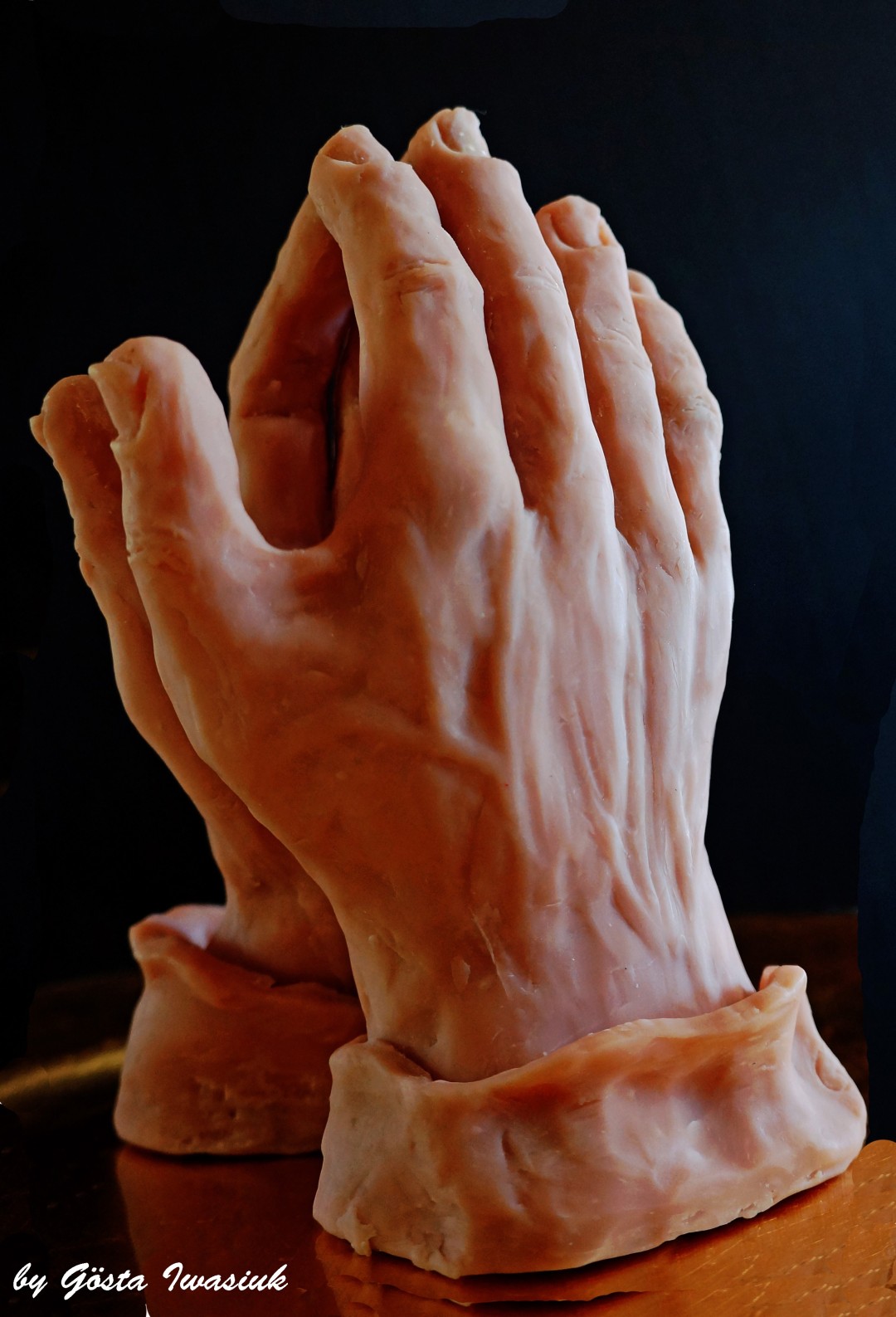
Albrecht Dürer, the German painter and printmaker, was a contemporary of Leonardo da Vinci. Dürer’s drawing of praying hands is a classic and was the inspiration for my sculpting of clasped hands in prayer. His drawing served as a study for a full-sized painting commissioned by a church. He delivered the painting, but the church was consumed by fire along with the painting. Only his drawing remains.
The origin of folded hands to pray is shrouded in the fog of the historical past. Many of the world religions use folded hands to signify communing with God. It is seen in Buddist, Hindu, and Shinto prayers.
In 597 BCE, Nebuchadnezzar deported Judeans forcibly to Babylon. That is considered the first of the many Jewish dispersions (diasporas). Later they were allowed to return to Judea, and they brought the clasping of hands to address God back with them. In 63 BCE, the Romans annexed Judea but the Jews revolted in 70 AD. The last stronghold was a mountain fort called Masada. The Romans eventually starved them out, then destroyed Jerusalem and systematically drove the Jews from Palestine. Now because clasped hands in prayer was also a Roman habit, Jews rejected that custom. And henceforth, Jews do not clasp hands for prayer.
Islam uses a more supplicant position for prayer, prostration, which requires seven body parts touching the ground, the head, both hands, both knees, and both feet for Shia Muslims, in fact, folding hands is forbidden, but Sunnis can fold their hands for prayer.
The clasped hands show you are free of weapons and are supplicant, and this has been Christianity’s prayer position since its inception. Christ is shown in multiple paintings with clasped hands.
Prayer is formulaic in most religions, very evident in repeating the same word that is considered sacred, for example, the “Ohm.” It is a mantra and is employed by Buddhists and Hindus. The Lord’s Prayer is along those lines. I learned that prayer as an altar boy right after World War II in what was renamed the Republic of Austria. I do not have many occasions to say it, but if I do, I know it only in German, just like when I have to recount my multiplication tables. Those too I remember only in German because that is when I learned them, some seventy-two years ago: “Vater unser im Himmel, geheiligt werde dein Name; dein Reich komme; dein Wille geschehe, wie im Himmel so auf Erden. etc”.
The word “Amen,” brought by Hebrews from Egypt, is like a mantra. It has its origins in Amun Rah, the Egyptian Sun God. It is now used at the end of a prayer and connotes sanctification of the prior spoken words. It has assumed the meaning of “let it be so”! Christian prayer has the most freedom in how often to pray and what style is acceptable. Shias must pray three times a day while Sunnis must do it five times a day. Orthodox Jews must also pray three times a day, according to Abraham, who instituted the morning prayer, Isac the afternoon prayer, and Jacob the evening prayer. Those rules were formalized after the return from exile in Babylon, because individuals could not be trusted to talk to God using their own words. Christians prayer is freer in the number of times it is required and the content, which is sometimes formulaic, but can be and is in free form much of the time.
My sculpting of the praying hands was quite a challenge because the clay when baked, shrank and the fingers turned in various directions. The style of casting saved me, however. First, the impression is taken, and the sculpting is cast in wax. I could then warm the wax and adjust all the fingers as they should be for praying hands. Then the wax is surrounded by plaster. The cast is placed in high heat, and the wax is melted out. Using molten copper and tin (bronze) are then poured into the empty mold. When the metal has cooled, the mold is broken to display the final product. This technique dates back 3000 years to Greece and is called the “lost wax technique.” Amen!
